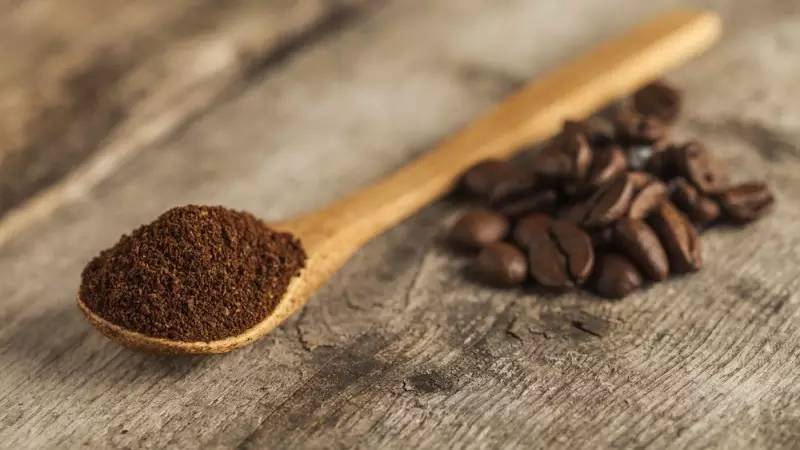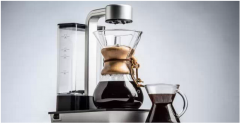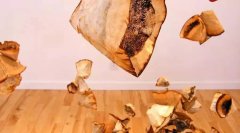The factor of choosing bean mill what's the difference between the grinding plate of the bean mill?

There are many paradoxes in the coffee world, all of which are misinformation! A lot of very simple things disguised as something deeper than nuclear engineering. A mouthful of nonsense, coupled with a meaningful smile! Coffee is a drink, bad taste is zero! If it's not delicious, don't talk about statistics! You ask which bean grinder is better? How about which bean grinder is more appropriate? It came right. According to the customer's situation and needs to choose the right grinding stone bar, coffee industry does not have 100% authority regulation, diversification is the origin of the world, since many people are entangled in the grinder, the following dry goods.

1. Same grinding standards, but different flavors
The core grinding disc of the bean grinder is mainly divided into cone grinding disc, flat grinding disc, ghost tooth grinding disc, three different grinding discs which is better? The same beans, in three different grinding wheel grinder, grinding degree is basically the same case, coffee taste is different. Although the main flavor is the same, but the details of the structure are very different! Why is that?
2. Powder structure determines flavor
After grinding, the structure of powder particles is completely different, cone grinding wheel, flat grinding wheel, ghost tooth grinding wheel. Through grinding, it can be observed that the structure and shape of the powder ground by different tool types are completely different. The influence of powder structure on coffee flavor is also related to whether the extraction is uniform, and has little to do with the extraction rate. Even if the extraction rate is the same, the flavor is still different, which is caused by uneven extraction.
flat-bladed disc

Advantages and disadvantages:
The flat cutter grinder consists of an upper cutter disc and a lower cutter disc, the base is fixed on the motor, and when the motor is started, the upper cutter disc and the lower cutter disc are rotated to generate cutting action.
As coffee particles fall from the center, the rotating blade at the bottom rotates the beans to the periphery, pushing them into the toothed blade section for grinding.
The upper and lower cutter plates of the flat knife are placed in parallel, so the coffee beans need to rely on the rotating force of the bottom cutter plate to push the coffee beans into the cutter plate, so the weight of the coffee beans placed above will affect the uniformity of the coffee beans entering the cutter plate, which in turn affects the uniformity of grinding; In addition, due to the pushing, the number of collisions between the coffee beans increases, resulting in an increase in the proportion of fine powder. This is the reason why the particle uniformity of the common flat knife grinder is slightly poor and the fine powder is more.
The coffee particles ground by the flat knife are flaky, and the flake can increase the cell wall area, so the coffee concentration and extraction rate can be improved in a short time with the flat knife, so that the coffee aroma can be significantly improved in a short time. At the same time, because of its flat shape and small volume, when the extraction time becomes longer, the xylem of the particles will absorb too much water, resulting in increased foreign taste and astringency.

conical grinding disc

Advantages and disadvantages:
Cone knife grinder is placed at the bottom of the conical cutter disc, and then with the outer ring cutter disc to grind, coffee beans fall from above, coffee beans will be pulled down with the rotation of the conical cutter disc, and then produce grinding action, but also because of the relationship from top to bottom, so the particles can be pushed out without pushing coffee, compared with the flat knife grinder, the number of collisions between particles will be reduced a lot, so the proportion of fine powder produced by the cone knife will be reduced a lot compared with the flat knife, And the coffee grind uniformity will be greatly improved.
The particles ground by the cone knife will be close to the granular shape, resulting in a longer water absorption path of the coffee particles, and it takes a longer time to contact the water inside. Therefore, the soluble substances released by the cone knife particles in the early stage will be less, resulting in a concentration that is not too high in a short time. At the same time, because of the granular shape, even if extracted for a long time, the xylem absorbs less water, and it is less likely to produce miscellaneous taste and astringency.
Ghost tooth millstone


Advantages and disadvantages:
The coffee powder particles ground by ghost teeth are closer to round shape, and the proportion of coarse powder and fine powder is more uniform, so the coffee taste is cleaner, the flavor is more three-dimensional and full, but the machine price is higher.


When you need to get a higher concentration of coffee in a short time, flat knife grinder is a good choice, high concentration will also make the aroma rich, so the use of flat knife its aroma will be more obvious than the cone knife; when you need better taste, the granular coffee powder produced by the cone knife can reduce the xylem contact time, although the aroma is not as obvious as the flat knife, but even if the extraction time is prolonged, the taste is still better.
Important Notice :
前街咖啡 FrontStreet Coffee has moved to new addredd:
FrontStreet Coffee Address: 315,Donghua East Road,GuangZhou
Tel:020 38364473
- Prev

Doctor of Chemistry's masterpiece: Chemex Coffee maker using Chemex Coffee maker
To get a good cup of hand-brewed coffee, in addition to strict selection of beans and careful roasting, brewing utensils are also important. Good coffee pots, coffee cups, or filter paper can effectively improve the flavor of coffee. Chemex, a classic of the history of hand-brewed coffee utensils, is literally translated as chemical exchange. It is so named because the founder PeterJ.Schlumbohm is a chemical worker.
- Next

Exploring the Secret by follicle method ─ testing the meaning of different filters and their matched filter paper
Utensils: Aeropress+ original filter paper, MUJI fan-shaped rice porcelain filter cup + MUJI primary color filter paper (HK $9 50 sheets), HARIO V60 resin filter cup + 02 unbleached primary color filter paper (purchased on Taobao) respectively use the above three kinds of appliances to brew the following four kinds of beans at the same time, divided into four groups: test beans (all self-baked): East Timor-shallow, Brazil Santos
Related
- Beginners will see the "Coffee pull flower" guide!
- What is the difference between ice blog purified milk and ordinary milk coffee?
- Why is the Philippines the largest producer of crops in Liberia?
- For coffee extraction, should the fine powder be retained?
- How does extracted espresso fill pressed powder? How much strength does it take to press the powder?
- How to make jasmine cold extract coffee? Is the jasmine + latte good?
- Will this little toy really make the coffee taste better? How does Lily Drip affect coffee extraction?
- Will the action of slapping the filter cup also affect coffee extraction?
- What's the difference between powder-to-water ratio and powder-to-liquid ratio?
- What is the Ethiopian local species? What does it have to do with Heirloom native species?

